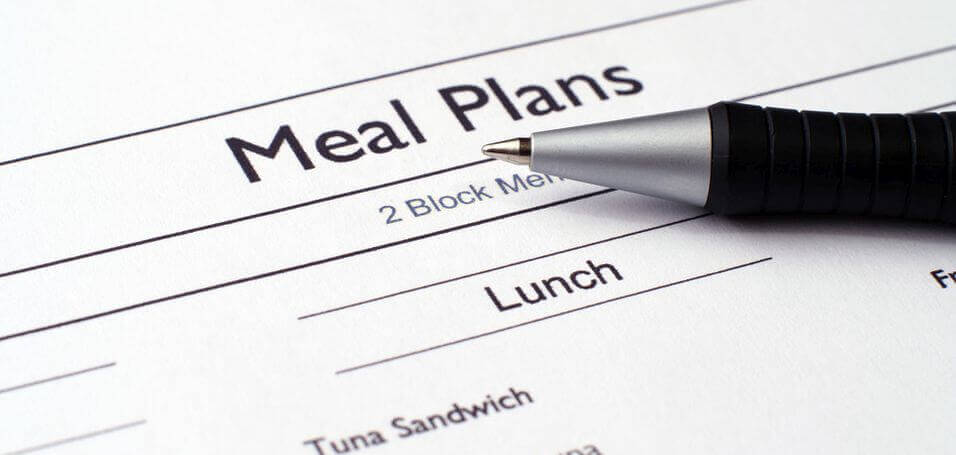“Impossible.”
“Waste of time.”
“Only if you have the right drugs.”
Those are some of the things people say about trying to build and lose fat at the same time, otherwise known as “body recomposition.”
Well, they’re wrong.
You absolutely can build muscle and lose fat simultaneously, and you can do it safely and naturally, too…if you know what you’re doing.
There are just five steps:
- Maintain a moderately aggressive calorie deficit.
- Eat enough protein.
- Do a lot of heavy, compound weightlifting.
- Strategically use cardio to burn fat faster.
- Take the right supplements.
It’s really that simple, and we’re going to break it all down in this article.
There’s a caveat, though.
If you’re an experienced weightlifter that has achieved most of what is genetically available to you in terms of muscle gain, you won’t be able to recomp effectively. You’ll be much better served by the more traditional cycle of “lean bulking” and cutting.
If, however, you’re new to weightlifting, or to proper weightlifting, then this is for you.
Let’s get started!
- Want to Know Even More About Body Recomposition?
Table of Contents
+1. Maintain a moderately aggressive calorie deficit.

Research clearly shows that the only way to achieve significant fat loss is to eat less energy than you burn.
Yes, calories in vs. calories out matters. A lot.
(The number one reason people stop losing weight is terribly simple: overeating.)
When you eat fewer calories than you burn, you’re in a “calorie deficit” because, well, you’re feeding your body less energy than it needs.
Now, as far as body recomposition goes, here’s the kicker:
You can build muscle in a calorie deficit and surplus, but you can’t lose fat unless you’re in a deficit.
That is, you can gain muscle eating less or more energy than you’re burning, but you must eat less to lose fat. And that’s why you have to be in a deficit to successfully “recomp.”
You don’t want to be in too large of a deficit, though, as that can inhibit muscle growth and cause mood disturbances, binge eating, and a host of other problems.
That’s why I recommend an aggressive, but not reckless, calorie deficit of about 25%.
Research shows that this is large enough to keep you losing fat at a rapid clip but not so large that you’ll suffer the unwanted consequences noted above.
(And if you’d like even more specific advice about how many calories, how much of each macronutrient, and which foods you should eat to reach your goals, take the Legion Diet Quiz.)
Want to know how to calculate your calories? Check out this article.
2. Eat enough protein.
If you want to lose fat and not muscle, then you need to make sure you eat enough protein.
And if you want to gain muscle as quickly as possible, well, you need to make sure you eat enough protein.
Thus, if you want to pull of a body recomposition, you really need to make sure you eat enough protein.
You see, research shows that when restricting calories, a high-protein diet is more effective at reducing body fat, helps preserve muscle, and increases satiety.
As far as your body composition goes, it’s by far the most important macronutrient in your diet.
The government recommends just 0.8 grams of protein per kilogram of body weight, but research shows that double and even triple that amount isn’t enough to preserve lean mass while dieting.
That’s why I recommend that you eat around 1 gram of protein per pound of body weight per day for body recomposition.
If you’re very overweight (25%+ body fat in men and 30%+ in women), then this can be reduced to around 1 gram of protein per pound of fat-free mass per day.
And again, if you feel confused about how many calories, how much of each macronutrient, and which foods you should eat to reach your goals, take the Legion Diet Quiz to learn exactly what diet is right for you.
Want to know more about how much protein you need to eat and why? Check out this article.
3. Do a lot of heavy, compound weightlifting.
The primary drive of muscle growth is progressive tension overload, which refers to increasing tension in your muscles over time.
The best way to do this is to add weight to the bar, which is why getting stronger is so important as a natural weightlifter.
Compound exercises are those that use multiple major muscle groups, like the squat, bench press, military press, and deadlift.
Exercises that tend to isolate an individual muscle group, like the dumbbell curl, are called isolation exercises.
Now, when you perform compound exercises with heavy loads (75%+ of your one-rep max), you create very high levels of muscle activation and tension in your muscles.
This is conducive to whole-body muscle growth, and these effects simply can’t be replicated with isolation exercises alone.
This is why the best workouts for body recomposition focus on heavy, compound training, and why they stress the importance of progressing to heavier and heavier weights as opposed to getting a big pump or burning a bunch of calories.
Want to know how to build an effective weightlifting routine? Check out this article.
4. Strategically use cardio to burn fat faster.

For best results do . . .
- At least two low- to moderate-intensity cardio workouts per week of 20-to-40 minutes each.
- One HIIT workout per week if you enjoy it.
- No more than 2-to-3 hours of cardio per week.
- Cardio and weightlifting on separate days. If that isn’t possible, lift weights first and try to separate the two workouts by at least 6 hours.
Although you’ll often hear fitness gurus tout HIIT as the most effective kind of cardio for fat loss, this isn’t true. Moderate-intensity, steady-state cardio is just as good at fat-burning, easier to recover from, and doesn’t sap your motivation or energy as much as HIIT, which is why I recommend you do it for the majority of your cardio workouts.
5. Take the right supplements.
I saved this for last because it’s the least important.
The truth is most supplements for building muscle and losing fat are worthless.
Unfortunately, no amount of pills and powders are going to make you muscular and lean.
Trust me. Pill popping, even to excess, isn’t going to be enough.
Now the good news:
If you know how to drive your body recomposition with proper dieting and exercise, certain supplements can accelerate the process. (And if you’d like to know exactly what supplements to take to reach your fitness goals, take the Legion Supplement Finder Quiz.)
Here are the ones I use and recommend:
- Protein powder: Protein powder, such as whey or casein, provides your body with the nutrients needed to build muscle tissue and recover from workouts.
- Creatine: Creatine supplements, such as creatine monohydrate powder and gummies, boost muscle and strength gain, improve anaerobic endurance, and reduce muscle damage and soreness from your workouts.
- Pre-workout: A high-quality pre-workout enhances energy, mood, and focus, increases strength and endurance, and reduces fatigue.
Want to Know Even More About Body Recomposition?
Implement these five body composition strategies, and you’ll be on your way to your best body ever.
I guarantee it.
If you’d like to know more about body recomposition, though, and how to get the most out of your diet, training, and supplementation, then you should read this longer, more in-depth article:
The Secret to Body Recomposition: Lose Fat & Gain Muscle
What’s your take on how to make body recomposition a reality? Have anything else to share? Let me know in the comments below!
Scientific References +
- E Bizzarini 1, L. D. A. (n.d.). Is the use of oral creatine supplementation safe? - PubMed. Retrieved July 27, 2020, from https://pubmed.ncbi.nlm.nih.gov/15758854/
- Bassit, R. A., Pinheiro, C. H. D. J., Vitzel, K. F., Sproesser, A. J., Silveira, L. R., & Curi, R. (2010). Effect of short-term creatine supplementation on markers of skeletal muscle damage after strenuous contractile activity. European Journal of Applied Physiology, 108(5), 945–955. https://doi.org/10.1007/s00421-009-1305-1
- Eckerson, J. M., Stout, J. R., Moore, G. A., Stone, N. J., Iwan, K. A., Gebauer, A. N., & Ginsberg, R. (2005). Effect of creatine phosphate supplementation on anaerobic working capacity and body weight after two and six days of loading in men and women. Journal of Strength and Conditioning Research, 19(4), 756–763. https://doi.org/10.1519/R-16924.1
- Branch, J. D. (2003). Effect of creatine supplementation on body composition and performance: A meta-analysis. International Journal of Sport Nutrition and Exercise Metabolism, 13(2), 198–226. https://doi.org/10.1123/ijsnem.13.2.198
- Stephen H Boutcher. (n.d.). High-intensity intermittent exercise and fat loss - PubMed. Retrieved July 27, 2020, from https://pubmed.ncbi.nlm.nih.gov/21113312/
- Gergley, J. C. (2009). Comparison of two lower-body modes of endurance training on lower-body strength development while concurrently training. Journal of Strength and Conditioning Research, 23(3), 979–987. https://doi.org/10.1519/JSC.0b013e3181a0629d
- Schoenfeld, B. J. (2010). The mechanisms of muscle hypertrophy and their application to resistance training. In Journal of Strength and Conditioning Research (Vol. 24, Issue 10, pp. 2857–2872). J Strength Cond Res. https://doi.org/10.1519/JSC.0b013e3181e840f3
- Mettler, S., Mitchell, N., & Tipton, K. D. (2010). Increased protein intake reduces lean body mass loss during weight loss in athletes. Medicine and Science in Sports and Exercise, 42(2), 326–337. https://doi.org/10.1249/MSS.0b013e3181b2ef8e
- Donald K Layman 1 , Richard A Boileau, Donna J Erickson, James E Painter, Harn Shiue, Carl Sather, D. D. C. (n.d.). A reduced ratio of dietary carbohydrate to protein improves body composition and blood lipid profiles during weight loss in adult women - PubMed. Retrieved July 27, 2020, from https://pubmed.ncbi.nlm.nih.gov/12566476/
- Halton, T. L., & Hu, F. B. (2004). The effects of high protein diets on thermogenesis, satiety and weight loss: A critical review. Journal of the American College of Nutrition, 23(5), 373–385. https://doi.org/10.1080/07315724.2004.10719381
- James W Krieger 1 , Harry S Sitren, Michael J Daniels, B. L.-H. (n.d.). Effects of variation in protein and carbohydrate intake on body mass and composition during energy restriction: a meta-regression 1 - PubMed. Retrieved July 27, 2020, from https://pubmed.ncbi.nlm.nih.gov/16469983/
- Evans, E. M., Mojtahedi, M. C., Thorpe, M. P., Valentine, R. J., Kris-Etherton, P. M., & Layman, D. K. (2012). Effects of protein intake and gender on body composition changes: A randomized clinical weight loss trial. Nutrition and Metabolism, 9(1). https://doi.org/10.1186/1743-7075-9-55
- Huovinen, H. T., Hulmi, J. J., Isolehto, J., Kyröläinen, H., Puurtinen, R., Karila, T., Mackala, K., & Mero, A. A. (2015). Body composition and power performance improved after weight reduction in male athletes without hampering hormonal balance. Journal of Strength and Conditioning Research, 29(1), 29–36. https://doi.org/10.1519/JSC.0000000000000619
- Hill, J. O., Wyatt, H. R., & Peters, J. C. (2012). Energy balance and obesity. Circulation, 126(1), 126–132. https://doi.org/10.1161/CIRCULATIONAHA.111.087213










